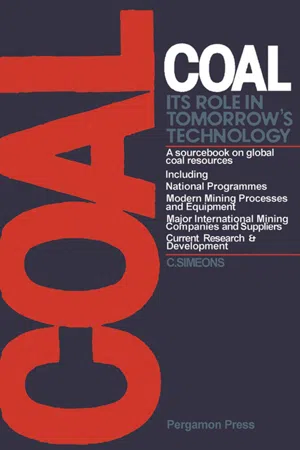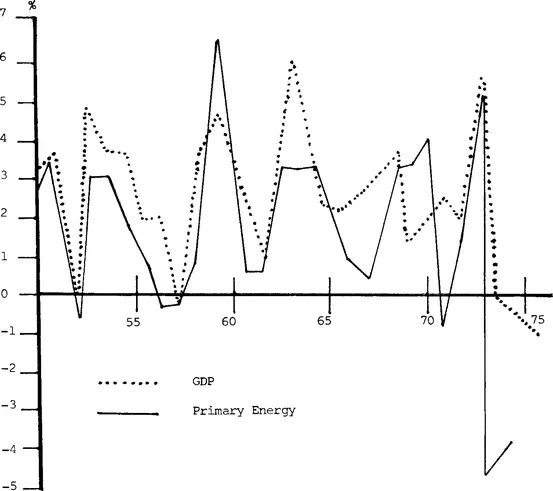
Coal: Its Role in Tomorrow's Technology
A Sourcebook on Global Coal Resources
- 330 pages
- English
- ePUB (mobile friendly)
- Available on iOS & Android
About This Book
Coal: Its Role in Tomorrow's Technology: A Sourcebook on Global Coal Resources focuses on the increasing consideration of coal as an alternative energy source, taking into consideration the mining, production, and research and development programs of various countries on this mineral. The book first offers information on energy demand, particularly noting the increasing consumption of energy around the world. The experience of the United States in meeting its energy demand through importation of oil and natural gas is discussed. The manuscript then examines the sources of coal and other resources, including types and properties of coal and disturbances in coal seams. The publication takes a look at the state of industries and coal production capabilities of various countries, such as the USSR, China, India, Poland, Australia, South Africa, and Canada. The text also considers the national research and development programs of the USSR, United States, China, India, Poland, France, and other countries on coal preparation, monitoring, and production. The manuscript discusses modern exploration programs on coal, mining plants and equipment, gasification of coal, and conversion of chemicals from coal. The text is a primary reference for readers interested in studying coal as an alternative energy source.
Frequently asked questions
Information
ENERGY DEMAND
Publisher Summary


| World Region | Economic sector | Fuel or Energy Carrier |
| N. America | Transport | coal |
| W. Europe | Industry | oil |
| Japan | Residential | Gas |
| Rest of World (non communist) | Non energy use of fuel | Electricity |
Table of contents
- Cover image
- Title page
- Table of Contents
- OTHER PERGAMON TITLES OF INTEREST
- Copyright
- LIST OF FIGURES
- LIST OF TABLES
- FOREWORD
- INTRODUCTION
- Chapter 1: ENERGY DEMAND
- Chapter 2: COAL — SOURCES AND RESOURCES
- Chapter 3: THE STATE OF THE INDUSTRY
- Chapter 4: NATIONAL RESEARCH AND DEVELOPMENT PROGRAMMES
- Chapter 5: PROSPECTING AND SURVEYING – IN PERSPECTIVE
- Chapter 6: MINING PLANT AND EQUIPMENT
- Chapter 7: PREPARATION AND THE CONSUMER
- Chapter 8: THE MINE OF THE FUTURE
- Chapter 9: GASIFICATION OF COAL
- Chapter 10: CONVERSION AND PETROCHEMICALS
- Chapter 11: ENVIRONMENTAL CONTROL
- APPENDICES
- ENERGY BALANCES IN COAL PRODUCING COUNTRIES
- U.K. MINING RESEARCH AND DEVELOPMENT ESTABLISHMENT PROJECTS
- EUROPEAN COMMUNITY - PRIORITIES IN REMOTE CONTROL AND MONITORING R & D PROJECTS
- MINES SAFETY AND HEALTH RECOMMENDATIONS (13th Report, 1975) - EUROPEAN COMMISSION
- ORGANISATIONS WITH MINING-ORIENTATED ACTIVITIES
- PETROLEUM FEEDSTOCKS & SOME OF THEIR DERIVATIVES
- SOURCES OF INFORMATION - COAL PRODUCING COUNTRIES
- GERMAN INDUSTRIAL INVOLVEMENT IN COAL RESEARCH AND DEVELOPMENT
- SUPPLIERS OF MINING EQUIPMENT
- BIBLIOGRAPHY
- INDEX